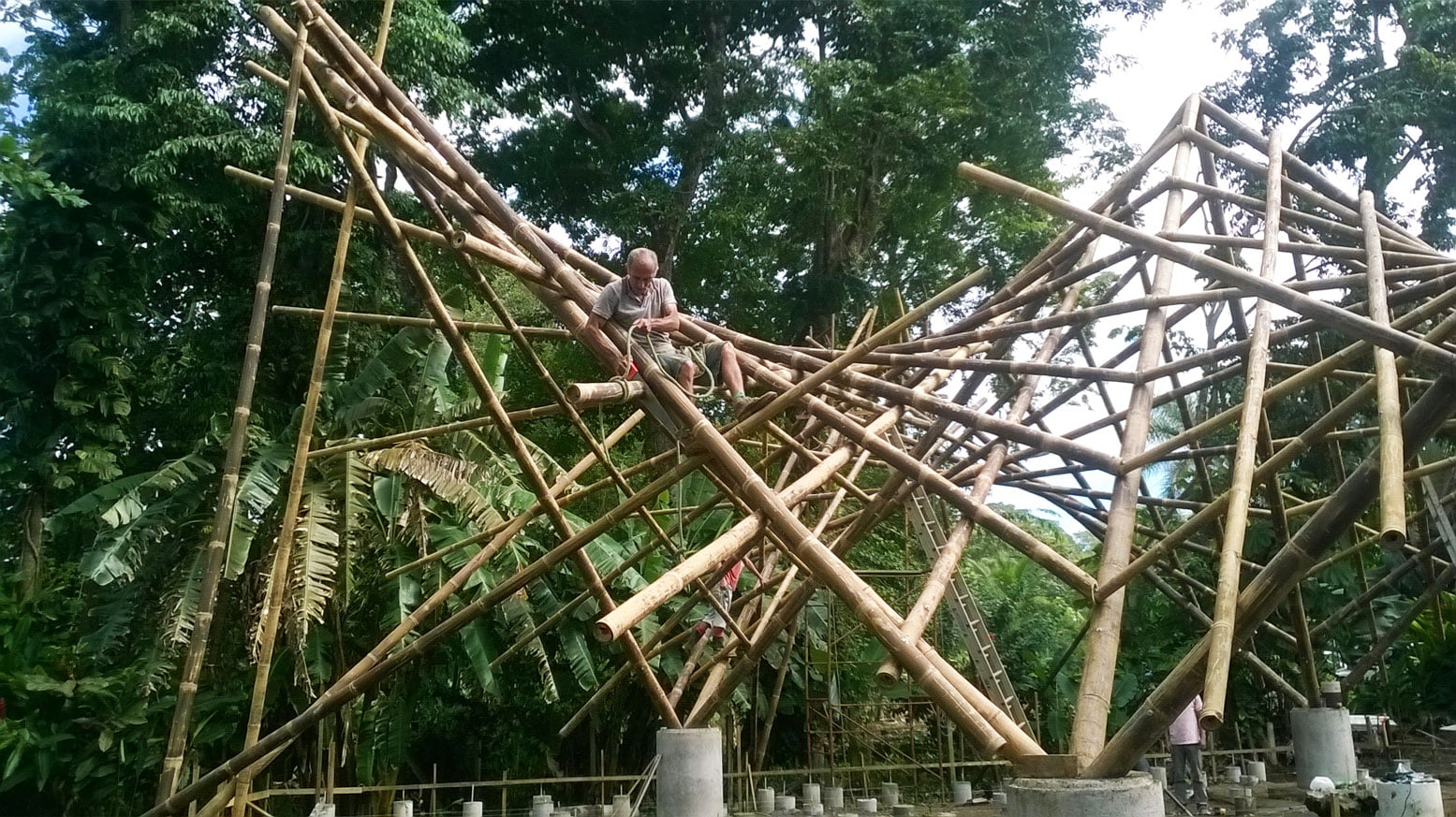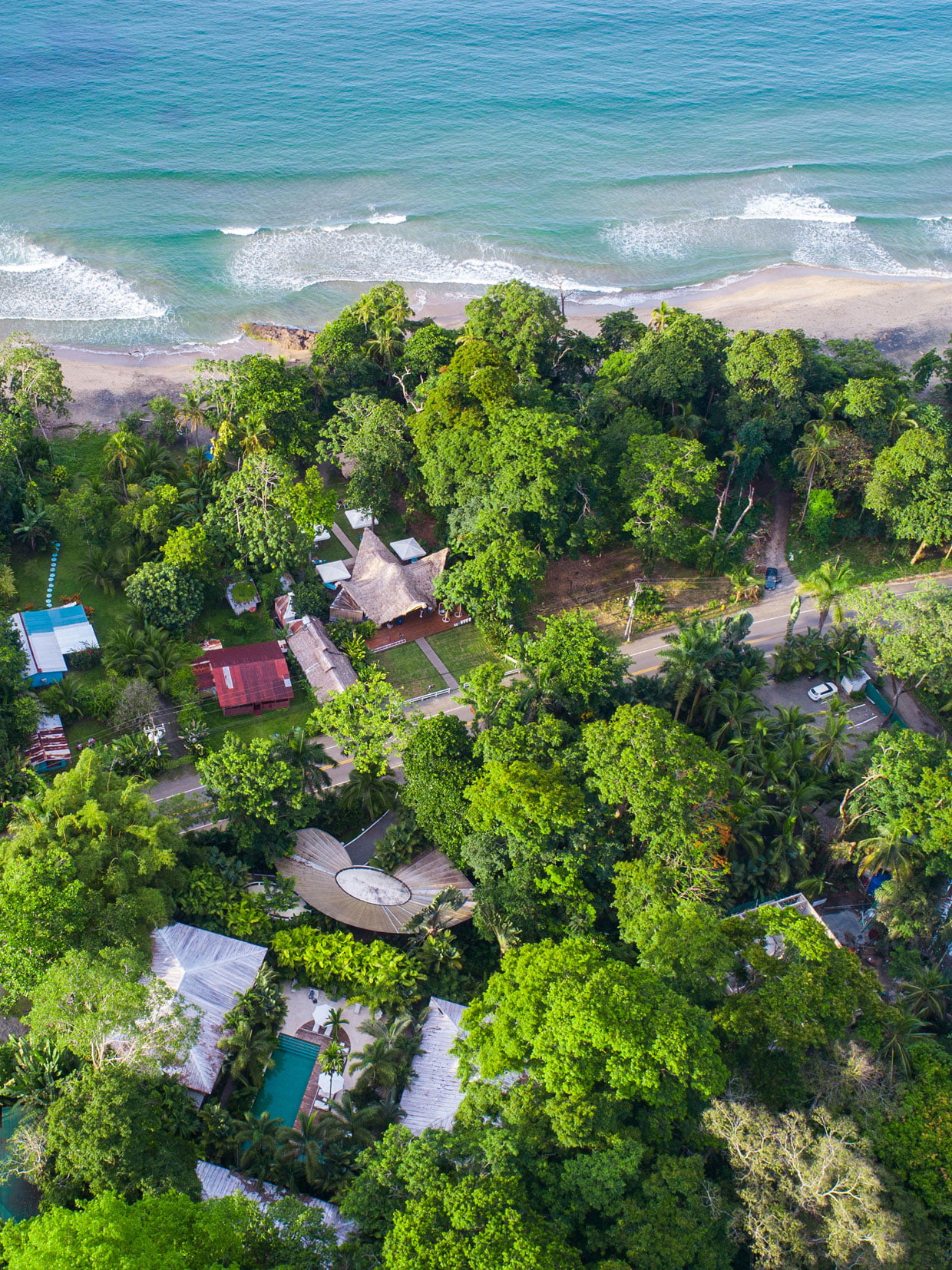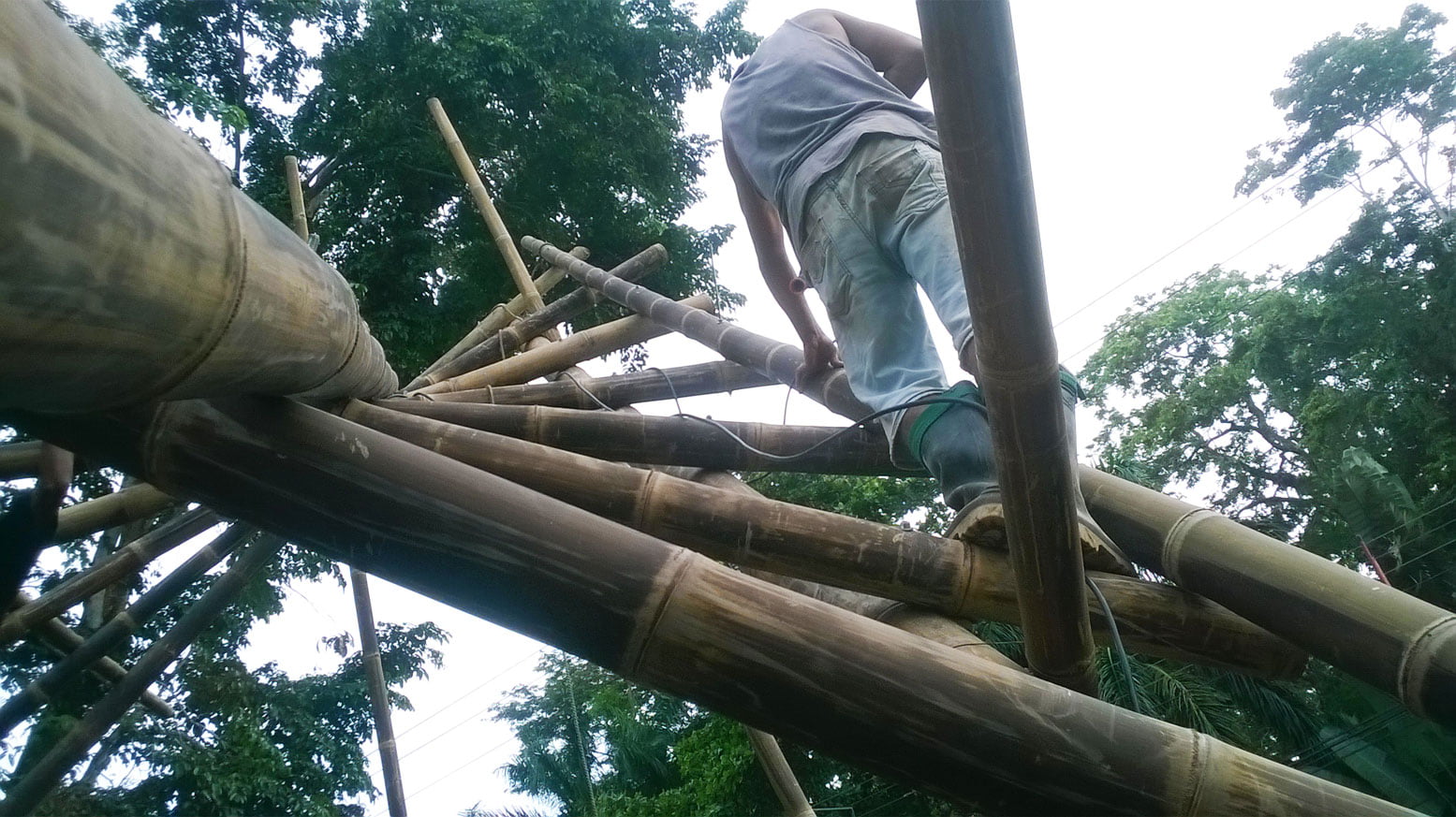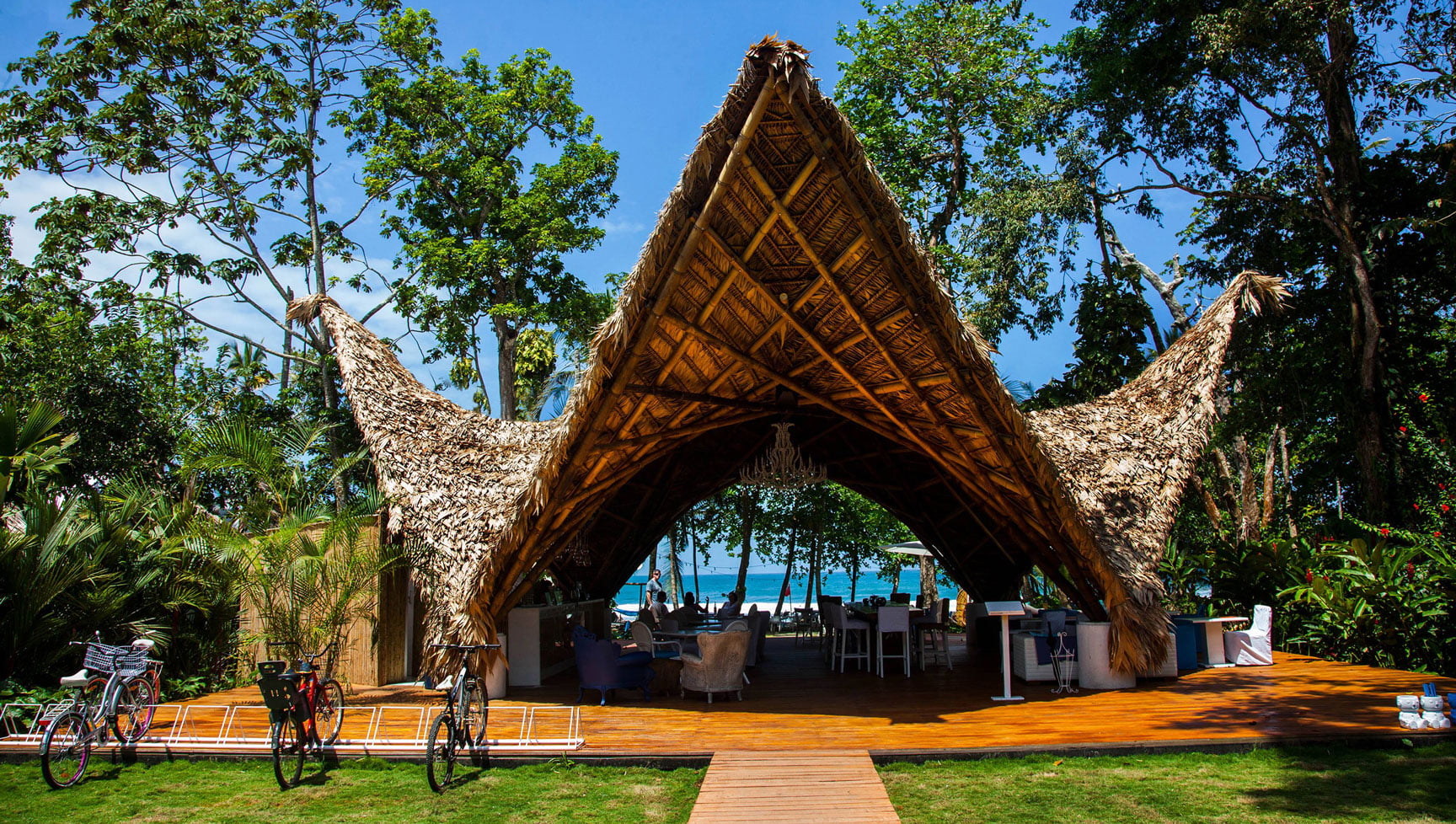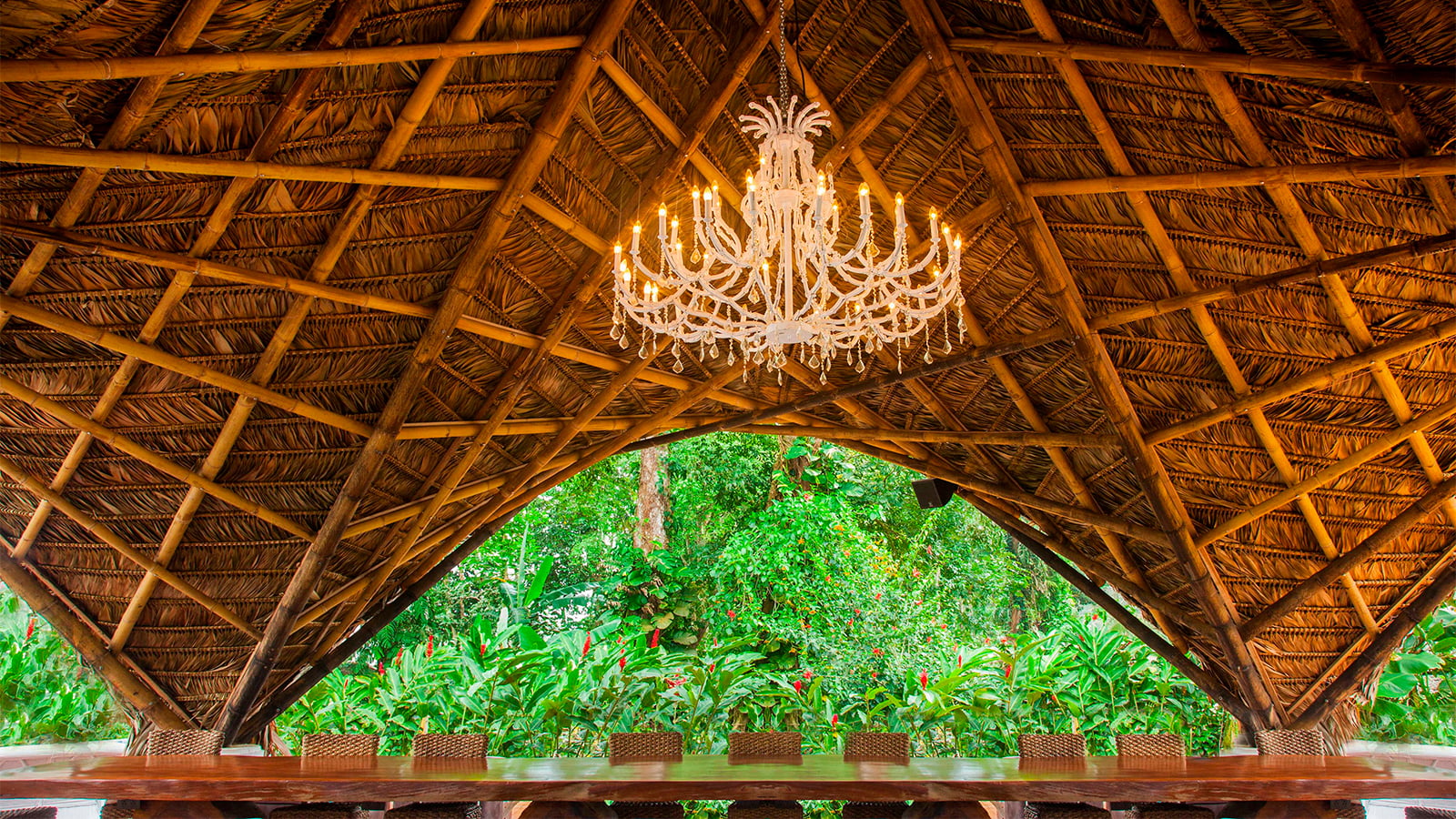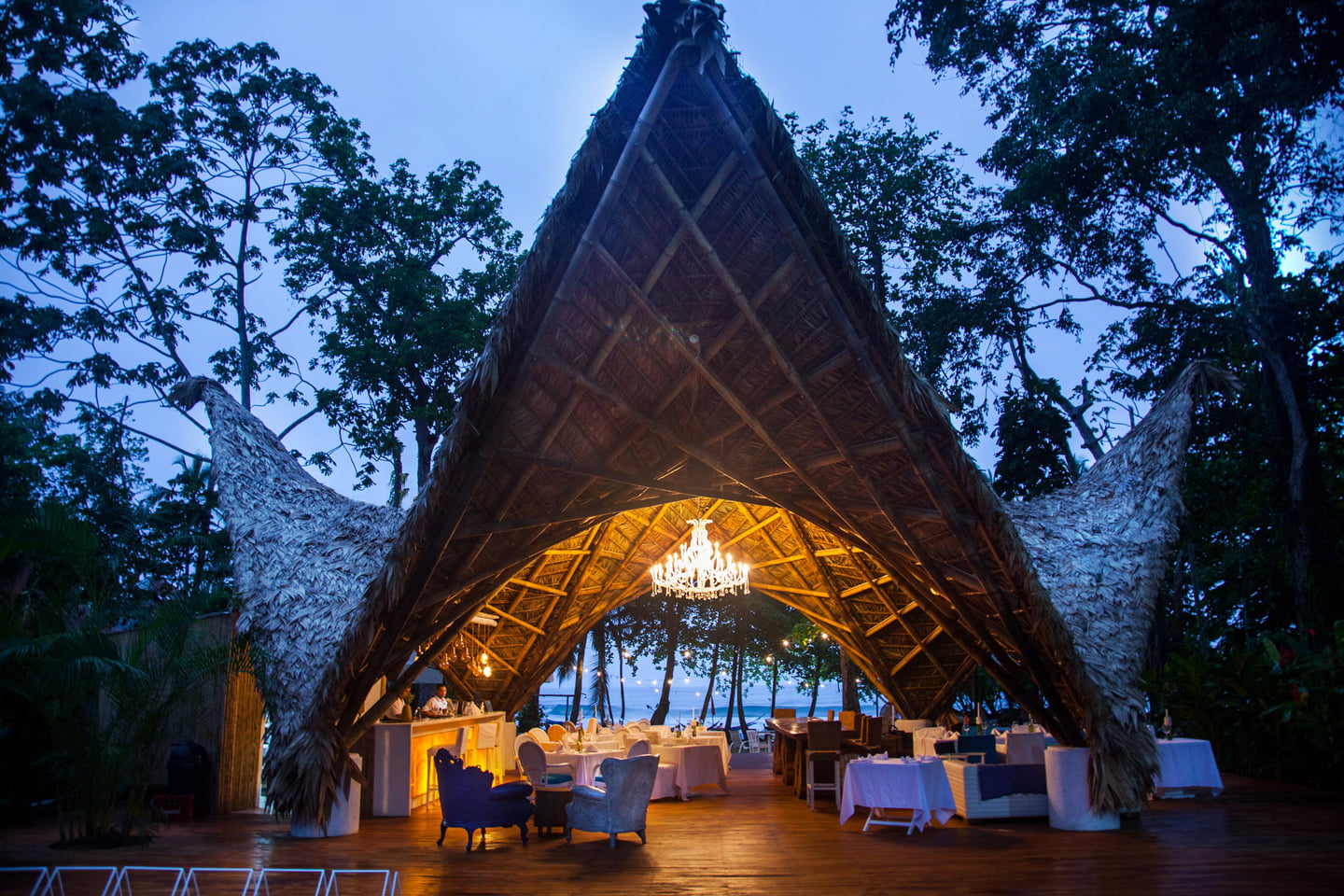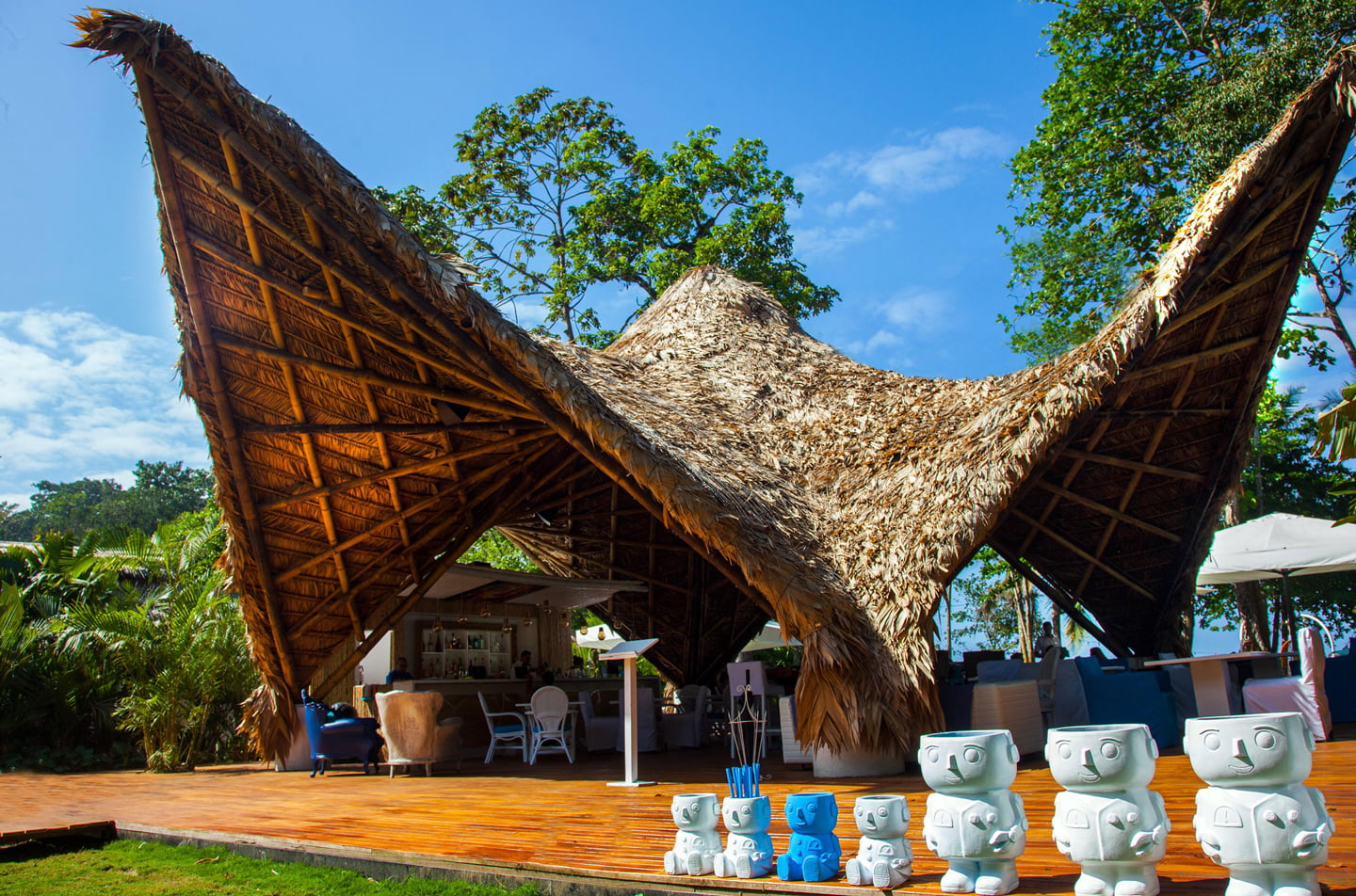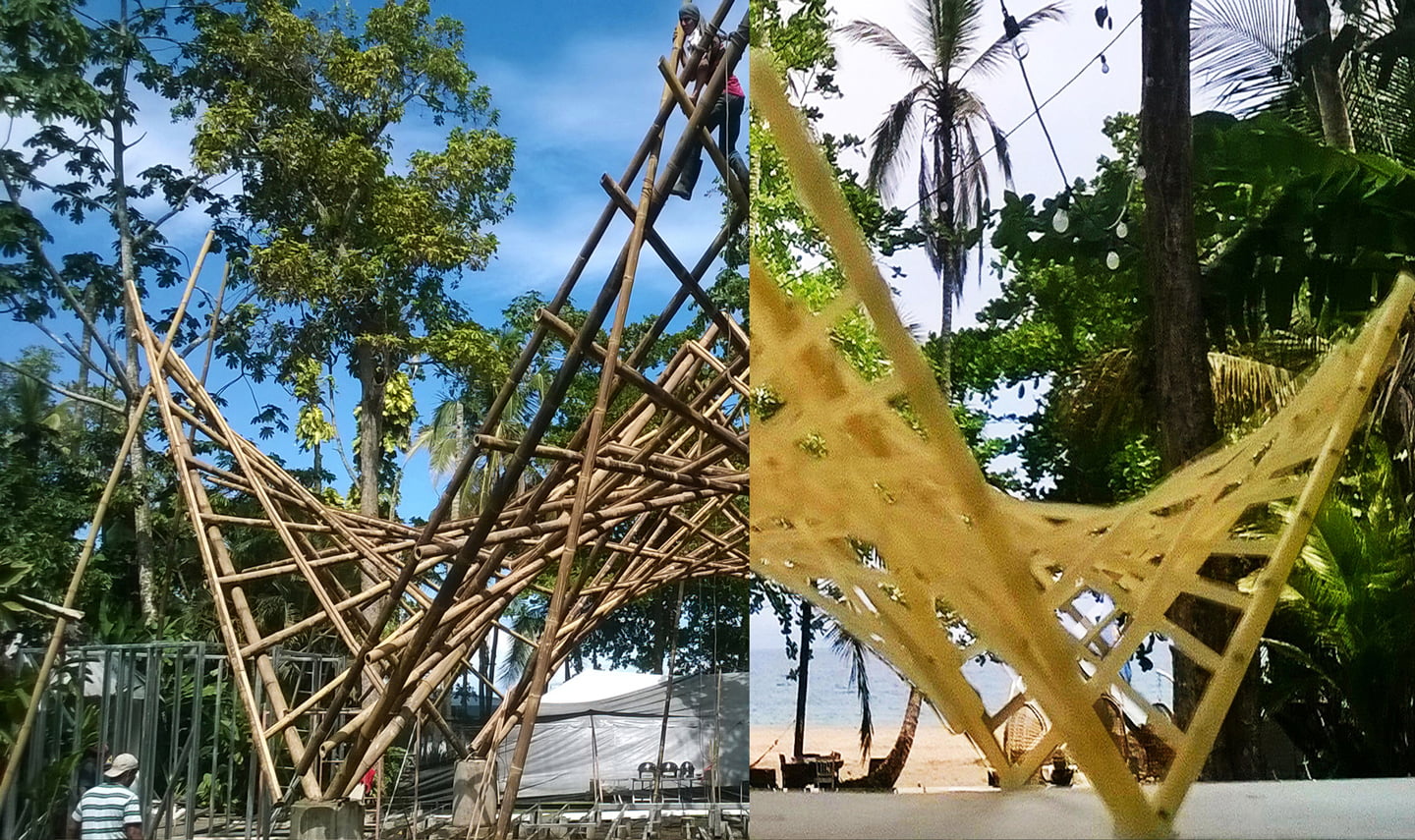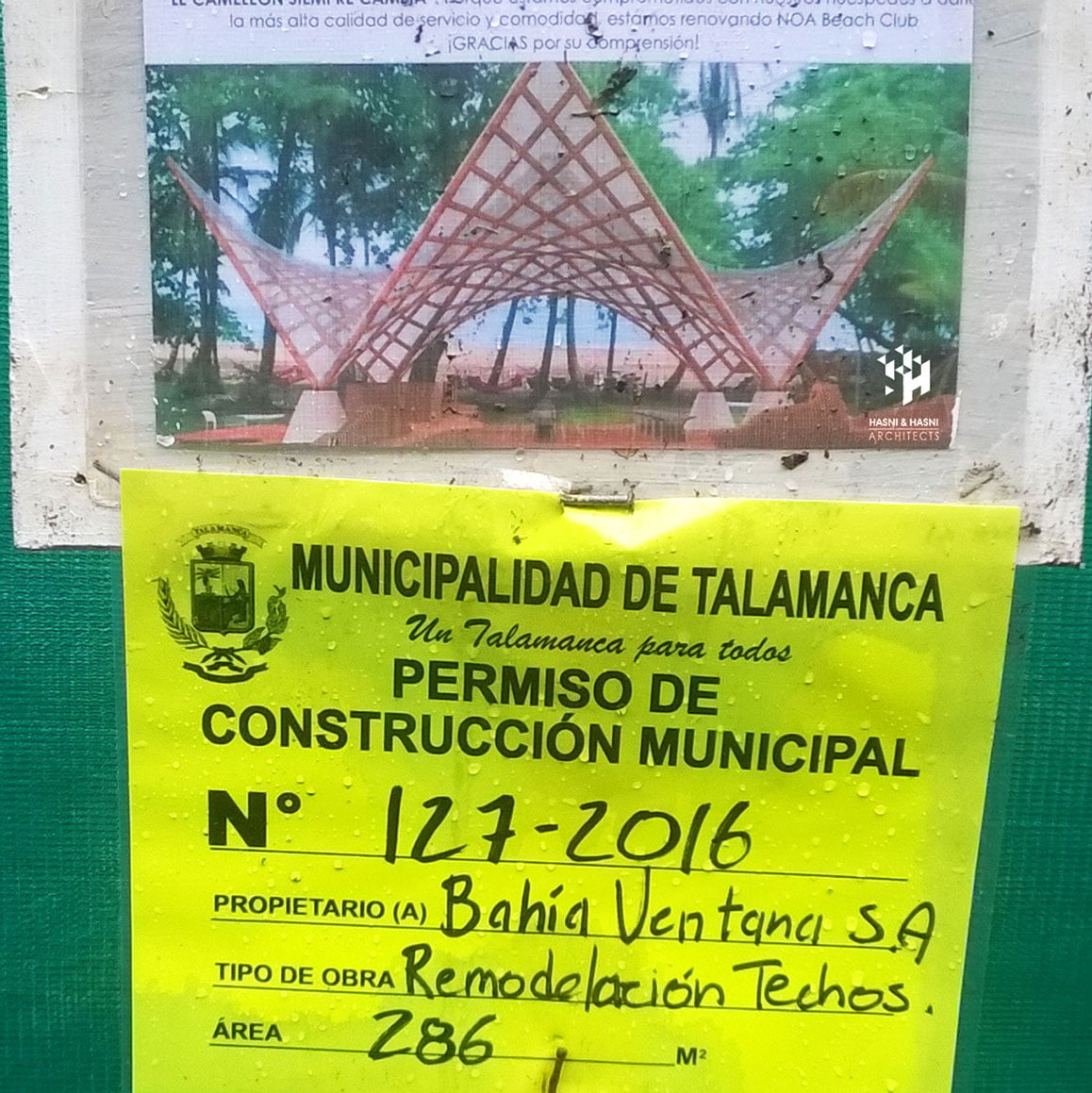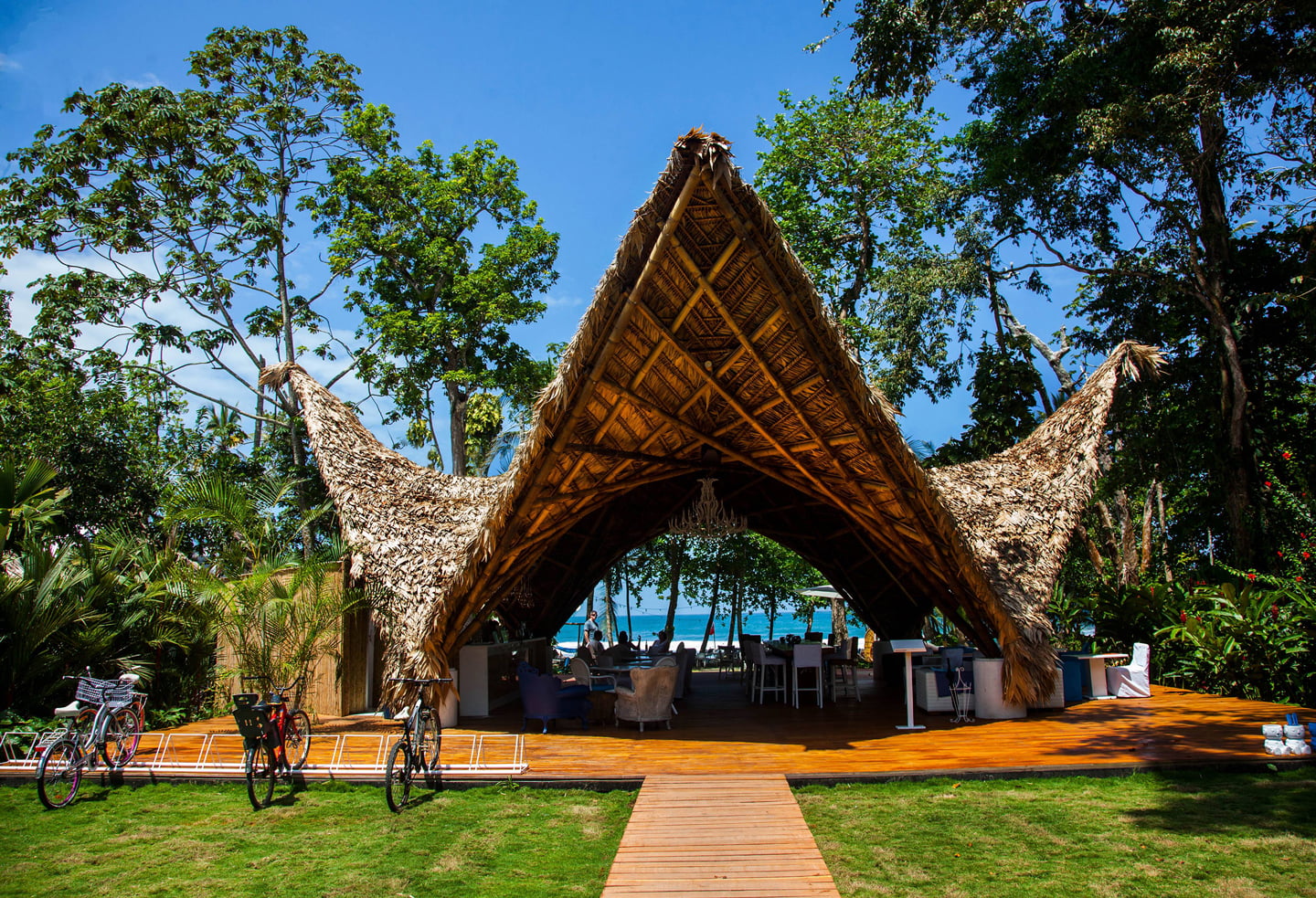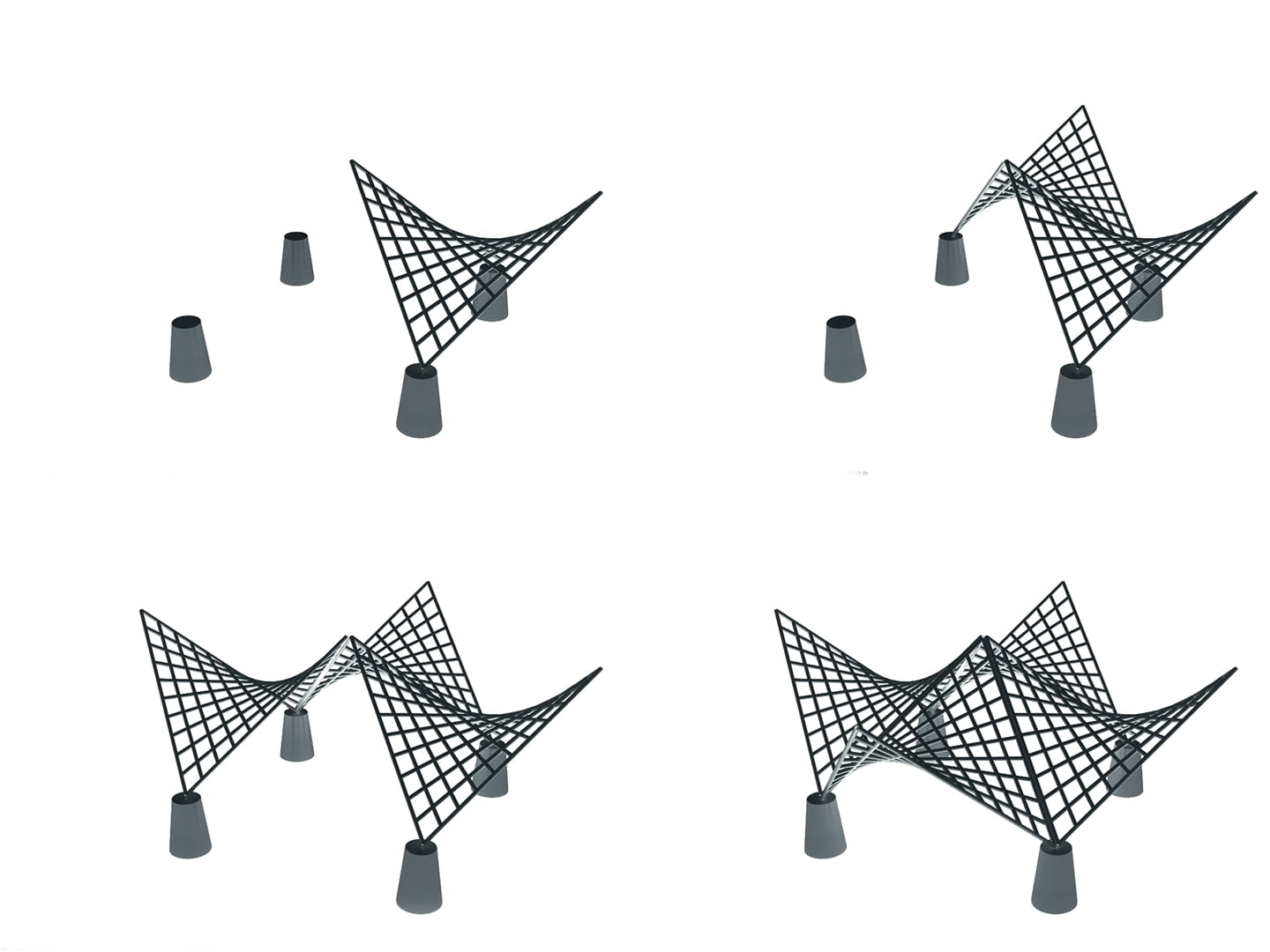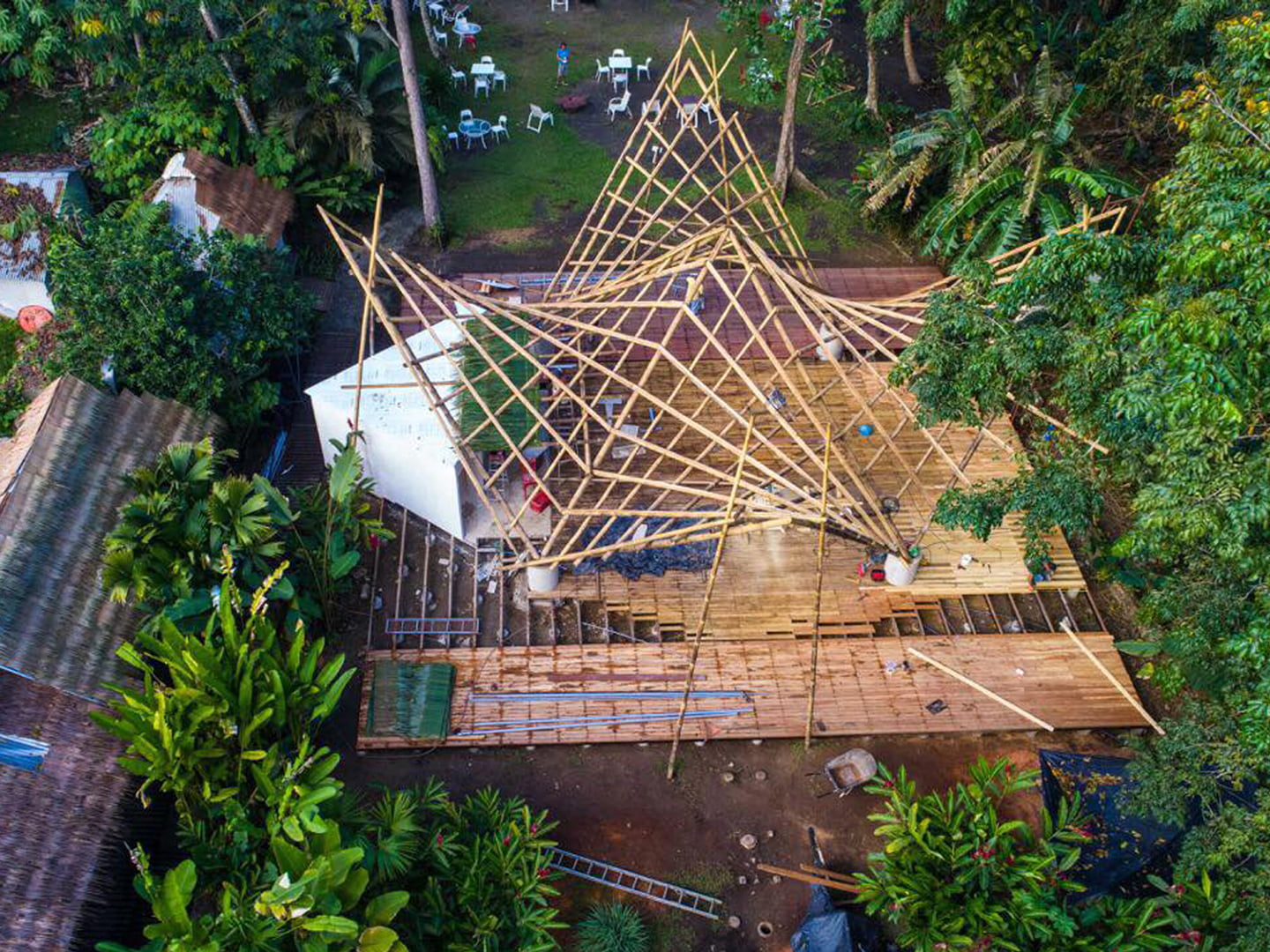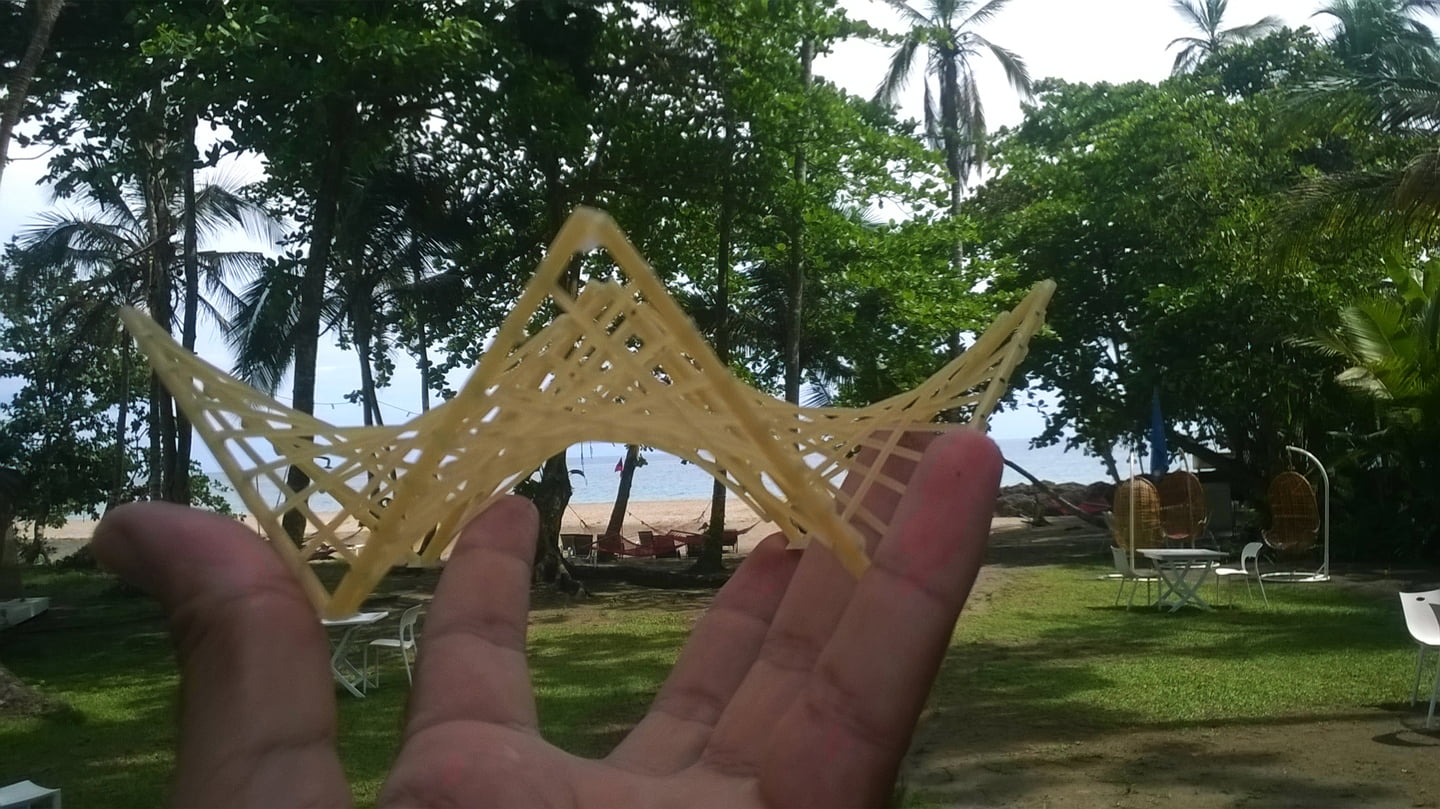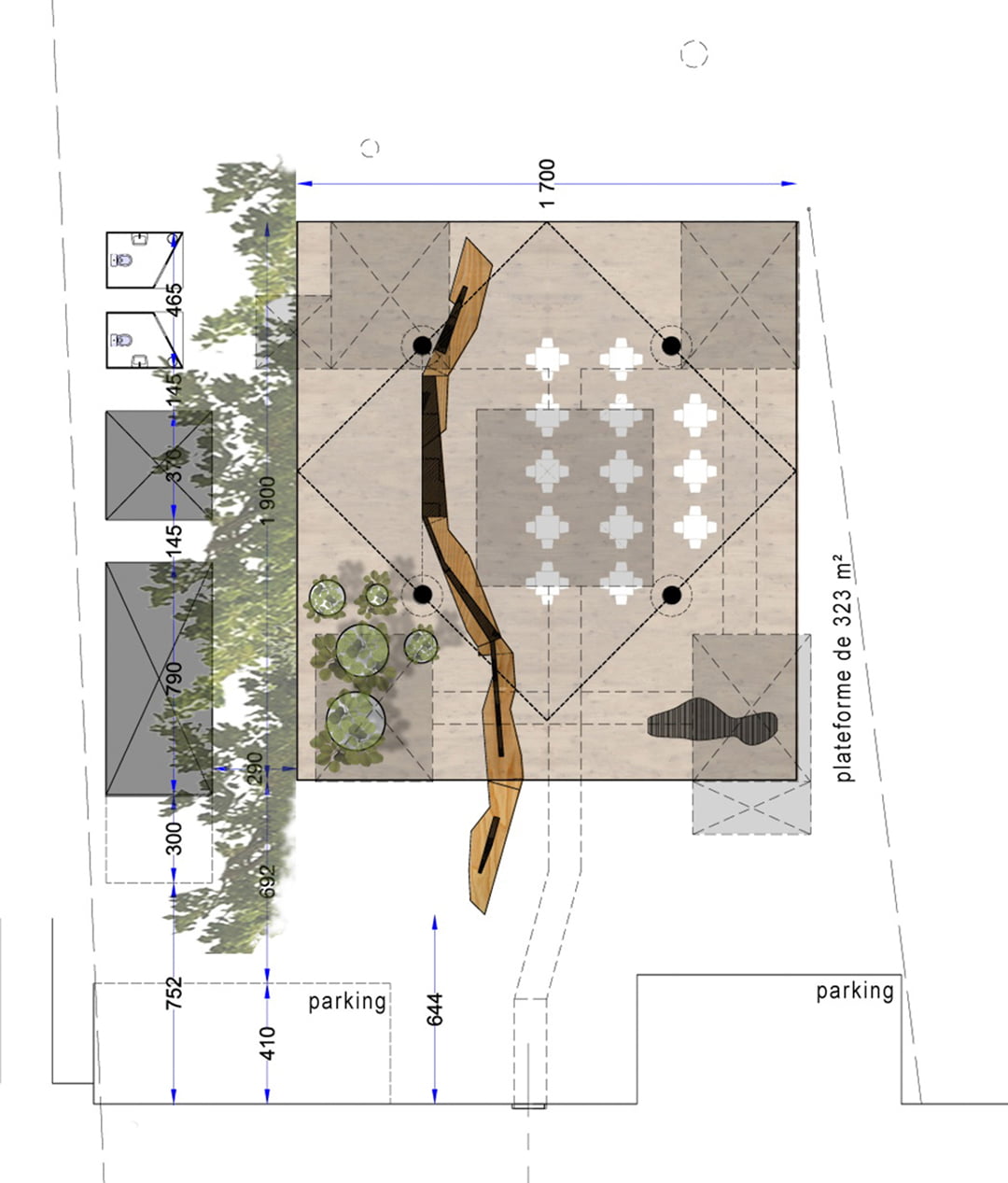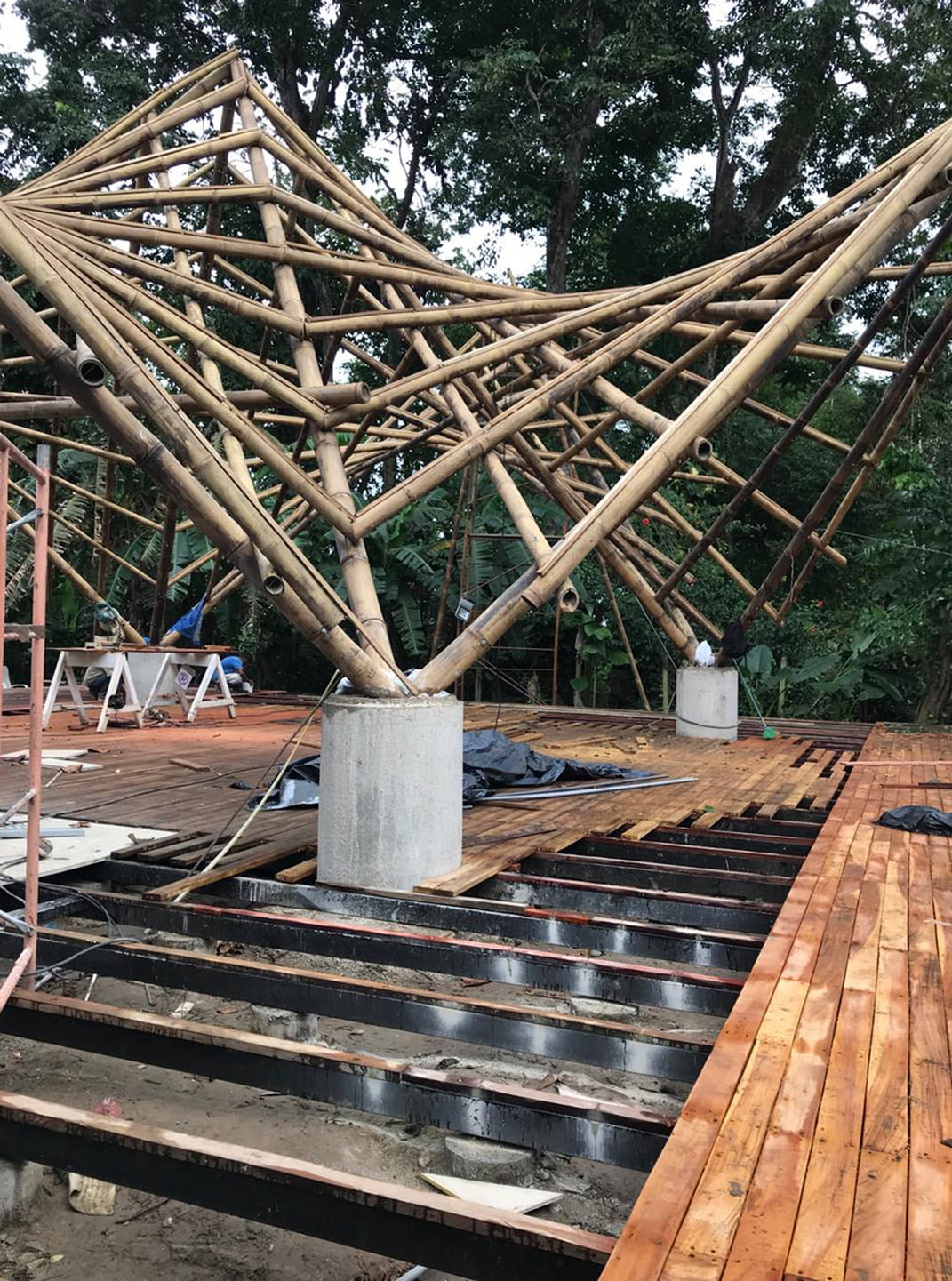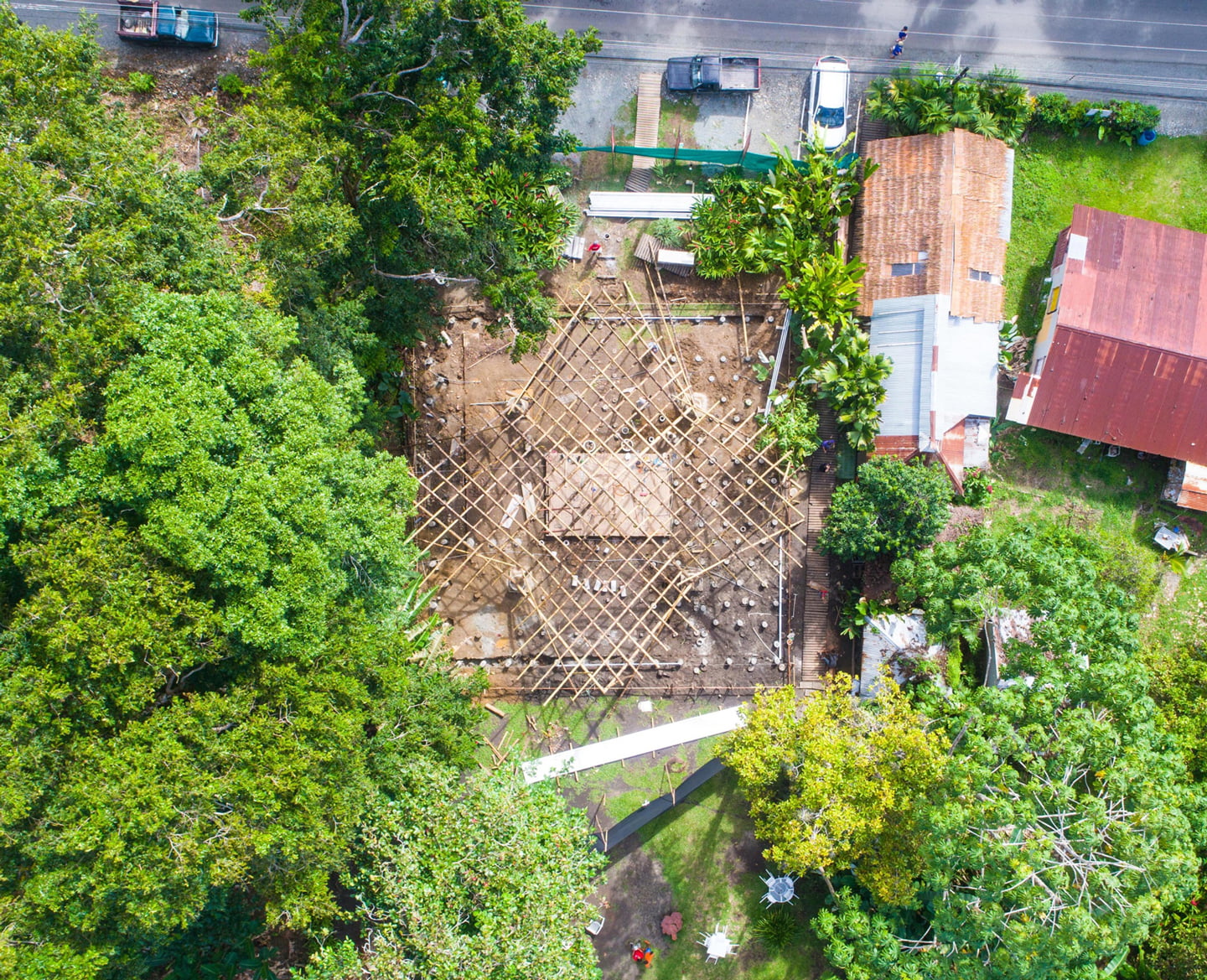Pavillion under the canopy
Location: Puerto Viejo, Costa Rica
Project Duration: 2017
Surface Area: 300 sqm
Status: Completed
Project Summary
With this project, we have returned to a notion that is dear to us at the agency: the zero degree of architecture, which is about having a roof over one’s head for shelter. The myth of Laugier’s hut.
To think that with this commission for a pavilion-lounge in the Costa Rican rainforest, we could not have been more fortunate. This project represents a stance against the standardization of architecture. The architecture of the modern movement and functionalism have led to what is termed as international architecture, an architecture of non-place. It’s a standardization of humanity, where the same tomato seed is planted in Brazil, Norway, and Tatooine, a hybrid seed (F1) sold by the same supplier. This is absurd given the vastly different climates, cultures, and tastes.
Our project aims to manifest the interaction between a specific place, a specific use, and a specific time. Against all odds, we chose to collaborate with the indigenous people, the Bri Bri Indians from the Bri Bri National Reserve a few kilometers from our intervention site. We visited their village, observed their techniques and methods of construction, and expanded our horizons in terms of scale and materials.
The form of the structure is inspired by natural phenomena: a bird landing or taking flight, a manta ray gliding through water, the lightness of a frigate bird in the air. We proposed a 200m2 structure that touches the ground only at four points, with a roof that distorts and touches the ground. Bamboo was chosen for the structure.
The result is a highly technical form, a hyperbolic paraboloid created from a translation of straight lines in space to achieve extreme curvatures.
The choice to use bamboo seemed inevitable to us, given the availability of the material and its technical performance. Using a local material allowed us to avoid carbon consumption for this operation, instead storing carbon by using materials that sequester it. Bamboo sequesters 12 tons of carbon per hectare per year.
During the project’s conception, we set ourselves the challenge of reducing the project’s carbon footprint. The largest carbon consumption post was our journey from Tunisia to Costa Rica, which emitted 8.2 tons of carbon.
The project is nestled in a natural clearing among the trees and integrates with the existing vegetation, creating a symbiosis with the surrounding greenery.
Working with the indigenous community involved two main aspects. For the superstructure, we collaborated with them on bamboo assembly, leveraging their expertise while introducing new and innovative forms. For the roofing, we ordered 300 meters of woven palm leaves from the women of the village and transported them to the site.
Gaining acceptance from the indigenous community was not easy, especially when presenting the project with a spaghetti-like model. We encountered some obstacles:
1. Building trust: Initially, many viewed the project as beautiful but unfeasible. To address this, we created a 1/3 scale intermediate model, quickly constructing a 3×3 meter hyperbolic paraboloid with three workers. They tested it by standing on it, establishing trust.
2. Bamboo procurement: We needed 9.5-meter bamboo lengths, but bamboo farms only produced 6-meter bamboo. By showing the model to a farm and gaining their approval, they agreed to supply us with 10-meter bamboo at the same price.
3. Roofing challenges: The woven palm leaf panels were traditionally used on flat or sloped surfaces, posing a challenge for our hyperbolic paraboloid structure. Collaborating with the indigenous community, we devised a method to arrange the panels to ensure smooth rainwater flow, resulting in a true weaving atop the bamboo structure.
Allrights reserved – Hasni and Hasni Architects 2024

